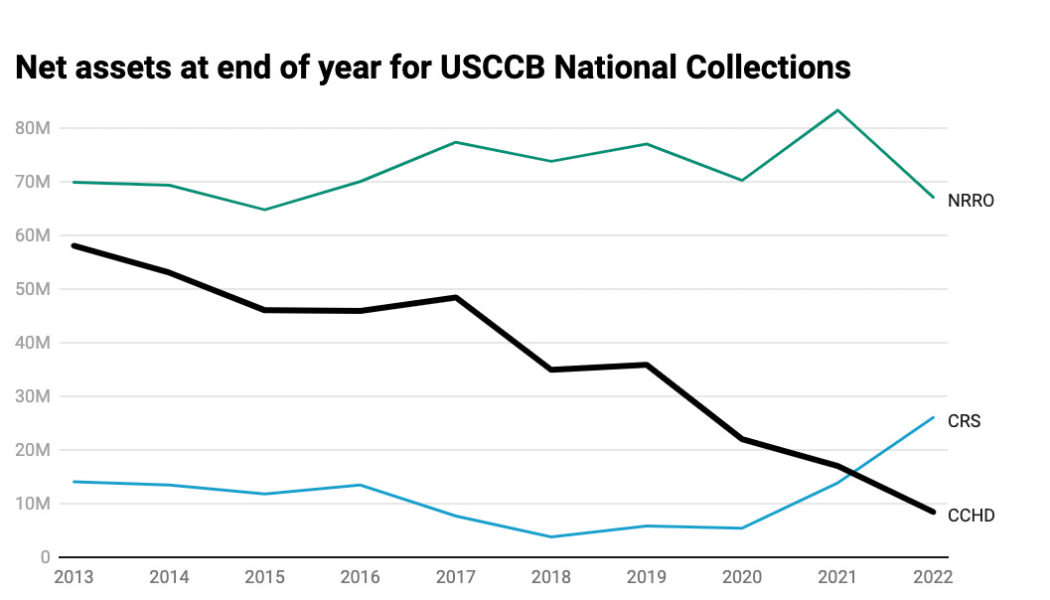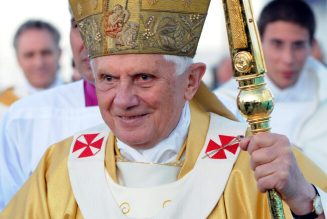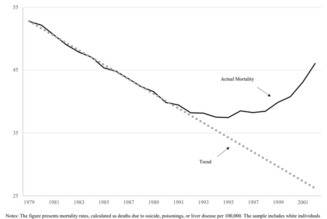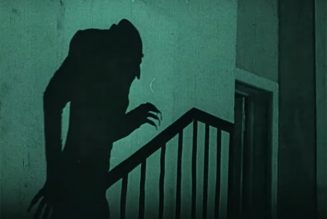Pillar subscribers can listen to this Pillar Post here: The Pillar TL;DR
Hey everybody,
Greetings from the road. As you read this Tuesday Pillar Post, I am on my way to Louisville, Kentucky, to cover the spring plenary assembly of the U.S. bishops’ conference.
I’ll be joined by The Pillar’s Ed Condon, as our team keeps you apprised on what’s happening at the USCCB meeting.
The bishops are set to do a few things while they meet:
They’re expected to approve a draft pastoral plan for youth and young adult ministry.
They’re expected to vote on a document for the pastoral care of indigenous people, which was pulled from the voting agenda during their November meeting.
They will vote on the full text of the retranslated Liturgy of the Hours, the final vote in a breviary retranslation project that the bishops began in 2012. It’s a big deal that after a lot of work from the International Committee for English in the Liturgy, and from the bishops’ conference staff, and from a lot of consultants, this text will be voted on, and can go to Rome for approval.
Almost. While they’ll be done voting on the Liturgy of the Hours retranslation, but before the new breviary can go to Rome for approval, the bishops will also have to vote on a new translation of Scripture currently underway, which will become the approved liturgical version of the Bible. That project has been going on for a very long time, but USCCB staffers have told us that the vote could happen in November 2024.
IF that happens, the bishops will send four volumes of the retranslated breviary, with readings from the retranslated Scripture, to the Vatican’s Dicastery for Divine Worship in December, and, 12 to 18 months later, the dicastery will approve the text.
As I say, we’re almost there.
But back in Louisville, the bishops will also have a consultative vote on the canonization cause of Servant of God Adele Brise.
And in their closed-door executive session — and much of the Kentucky meeting will happen in executive session — the bishops will talk about the financial woes of their anti-poverty Catholic Campaign for Human Development, as we told you back in April.
That could be a contentious conversation, as even the normally tight-lipped USCCB has acknowledged that the bishops “have begun the process of discerning the next 50 years” for CCHD.
“Begun” is the operative word there. While I’ve heard some conference-watchers — and even some bishops — speculate that the long-controversial CCHD project might be coming to an end as finances run tight, no one should expect that to happen overnight — if it is to happen at all.
When the bishops closed most of Catholic News Service a few years ago, the decision came after years of discussion, the input of consultants who studied the communications office, and at least one round of adjacent layoffs.
CCHD has a smaller staff, and could fold more quickly than did most of CNS, if that’s what the bishops want. But the conference moves slowly, and that decision would come after several rounds of conversation.
And I suspect that a number of bishops, even those critical of the program, will first suggest different management personnel for CCHD as a way of reorienting the program, and some may also suggest a focus on providing direct aid to Catholic apostolates, rather than to community organizing programs.
Of course, any staffer considered to run the project would likely want to understand the direction that bishops actually intend to take it, which means that CCHD might first linger in uncertainty for a while, if it is to eventually take a new direction.
Consider this meeting’s closed door conversation the opening bell, not the final decision, for CCHD.
And while it’s not on the schedule, I should mention that I expect bishops will also be raising questions about Bishop John Stowe’s decision to admit as a diocesan hermit a person who identifies as transgender, and who made public that identity on Pentecost Sunday. The situation, and Bishop Stowe’s approach and statement, raise a number of canonical and theological questions, some of which connect to the conference’s 2023 “Doctrinal Note on the Moral Limits to Technological Manipulation of the Body.”
My sense is that behind the closed doors of executive session, there will likely be bishops raising this topic — though what form that will take remains to be determined.
(FYI – The Pillar will have its own coverage of the case of Brother Christian Matson, the hermit’s officially designated religious name, later this month.)
At any rate, we’ll be in Louisville, so in addition to covering the bishops, rest assured that Ed and I will find our way towards some Old Fashioneds — and that will be praying for you.
And here’s the news:
The news
Brendan points out that for all the talk about what the bishops might do with CCHD, the numbers themselves suggest some clear direction: The program has, for years, spent far more money than it has taken in. Its reserve assets are approaching zero. The current road for CCHD is just not — unless something unexpected turns up — sustainable.
And addressing those problems, Brendan says, is not about politics or agendas. It’s a simple matter of dollars and sense.
Take a look at CCHD’s assets, as compared to some other USCCB projects:
Three more U.S. metropolitan archbishops are due to turn 75 within a year’s time. As The Pillar has mentioned to you many, many times, the Church in the U.S. is due for major turnover among the episcopate’s pallium-wearers.
Archbishops usually come from the ranks of serving diocesan or auxiliary bishops — and big metropolitan sees often get their archbishop from other archdioceses.
So which bishops and archbishops might soon be due for a move? The Pillar took a look at just five possible up-and-comers.
Upstream, a new podcast from Patrick Lencioni, provides ideas and encouragement so courageous priests can more effectively run their parishes and spread the Gospel. Pat is not only a passionate Catholic but is the pioneer of the organizational health movement and one of the world’s foremost experts on leadership and teamwork.
But things just got pretty serious: Major Archbishop Raphael Thattil, the new head of the Syro-Malabar Church, announced June 9 that priests who refuse to celebrate a new form of the Eucharistic liturgy will be barred from priestly ministry, and declared to be in schism.
That’s no joke.
I myself can’t help but wondering whether Thattil will actually declare a cadre of priests excommunicated if they don’t comply with his directive. There have been a lot of false starts during controversy in the Syro-Malabar Church, and the threat of punishment has not always been carried through.
Still, this is a major escalation of the world’s “most violent liturgy war,” (as one Pillar commenter called it) and it’s worth noting.
But unless you’re a cleric or a religious, it might not always be clear where to find a spiritual director, or whether someone who offers guidance is actually qualified. The danger, even for clerics and religious, is that someone hanging out his shingle might actually be a nut — and cause far more harm than good.
The Diocese of Charleston wants to help local Catholics with that problem. So the South Carolina diocese established last year a diocesan office of spiritual directors — and set standards of training and conduct for people who want to become directors.
Those conduct standards aim to ensure good counsel, and aim to protect people who might be vulnerable to exploitation or abuse.
So how is it working? Journalist Laura Loker aimed to find out.
Give this excellent report a read.
Why? Because there are a lot of Ukrainian Catholics in Germany, currently cared for by a structure called an exarchate.
Establishing a full-fledged Ukrainian eparchy in Germany would be a sign of the important presence of Ukrainian Catholics. But there are a number of complicated legal questions which must first be worked out, because of the Church’s complicated relationship to the German state.
And, according to local Catholic media, the German bishops seem “reserved” about the idea of giving full voting rights (on many topics, but not all) to a Ukrainian Catholic bishop in the country.
—
Finally, guys, here’s the interview you really want to read.
As many of you know, a Pennsylvania priest is facing charges for stealing more than $40,000 from his parish to pay for his cell phone video game habit — a habit which has cost, in total, more than $200,000.
When you read about that story, you might have wondered how anyone could spend $200,000 on cell phone video games.
We’ve certainly wondered that.
So Ed had a very long conversation this week with a video game designer — a guy who used to design the kind of free-to-play cell phone games that can wind up costing hundreds of thousands.
We learned about the psychology behind the games, and about the Saudi princes who reportedly employ official video game players, and spend huge sums, to keep themselves atop video game leaderboards.
But Ed and designer Chris Floyd also talked about the philosophy of video games, what they’re for, and why people like them.
I learned so much from this conversation. I found it absolutely fascinating.
And I know you will too.
—
I gotta go!
Ok, readers, at the beginning of this newsletter, I told you that I was en route to Louisville for the bishops’ meeting.
That wasn’t exactly true. It’s Tuesday morning, and I’m still at home — my flight is in about two hours. The problem is that I haven’t exactly “packed” yet, and I’ve got a lot of equipment to get together, before I leave the house in about 10 minutes.
I should have packed after my six-year-old’s Little League practice last night, but I was beat from pitching to second graders in the heat for 90 minutes.
So the deal is that I have to rush out of here pretty quick. I like to cut it close at the airport, but I don’t want to miss my flight.
This is ordinarily the section of the newsletter in which I aim to write an entertaining or insightful essay, about some topic outside The Pillar’s ordinary scope.
I would have written about these guys, who stole 500,000 euro worth of Bulgari jewelry in Rome by tunneling through and then disappearing back into the city’s ancient sewers — and why it’s hard to root against hard-working cat burglars like that.
Failing that, I would have written about my enthusiasm for the inclusion of breakdancing in the 2024 Paris Olympics.
And I will, in an upcoming newsletter, explain to you why I think breakdancing — and even a breakdancing scandal — is exactly what the Summer Olympics need.
But I really can’t write about that stuff right now, you guys. I’ve got to pack.
So I’ll just leave you with this:
In southern Colorado, God’s creative hand spent 400,000 years forming a gigantic pile of sand in the San Luis Valley. There’s a 30-square mile collection of sand dunes hundreds of feet high, and plopped into the unlikeliest of places — a fertile mountain valley.
Our family visited those sand dunes this weekend, and they were beautiful. You should go. And whatever reason the Lord had for putting them there, we used them for sledding and sandboarding.
Really. Check out how awesome this is:
Sandboarding is also a lot cheaper than the winter boarding and sliding options here in Colorado, for which one must take out a second mortgage on his house to be able to afford. Seriously, we’ve got great mountains in Colorado, but snow skiing and boarding are rich men’s sports, and I run a Catholic journalism outfit, if you know what I mean.
So for now, I’m gonna try to keep my kids sliding across the sand, which you can do for the cost of a national park pass. If I’m lucky, they’ll eventually put this in the Olympics.
Please be assured of our prayers, and please pray for us. We need it.
Yours in Christ,
JD Flynn
editor-in-chief
The Pillar
Upstream, a new podcast from Patrick Lencioni, provides ideas and encouragement so courageous priests can more effectively run their parishes and spread the Gospel. Pat is not only a passionate Catholic but is the pioneer of the organizational health movement and one of the world’s foremost experts on leadership and teamwork.
Comments 15
Services Marketplace – Listings, Bookings & Reviews













